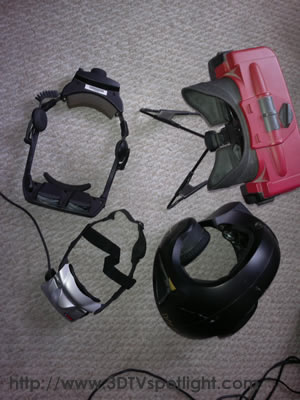ADVERTISEMENT
lea en Español
Dual Screens Technology for Stereoscopic Vision
What is the most obvious solution to the problem: how do we present each eye with a different image? The most intuitive answer at least is, place each image in front of each eye. This is what is offered in some devices, commonly called virtual reality headsets.

There is also a 'Virtual Boy' in the image;
a previous attempt by Nintendo at stereoscopic vission
These devices have a direct relation with virtual reality, which tries to 'immerse' the user in a virtual world. The user wears the headset and keeps the screens in front of his or her eyes no matter where he or she is looking. The headset includes sensors that tell the computer that generates the scenario about the head movements, so the image changes according to the user's point of view.
Nonetheless, there are reasons why these headsets have not extended use for watching 3D TV. They also present some inconveniences when used for virtual reality (like the dizziness in people that are not customized to their use, and greatly increases while playing games, or the 'inertia' of the sensors), but this is not within the scope of this article.
When the user wears a headset, which is in general heavier than normal glasses, most headsets include a dark cover that blocks the rest of the field of view. If the user is watching the scene in some virtual world, but with the side of the eye catches a glimpse of the real world, the effect of being immersed in a virtual world is broken; therefore, while the user wears the headset, he or she is not aware of what happens around him or her. While used in virtual reality, the user normally stands in some kind of harness that will prevent him or she to walk blinded somewhere where he or she can hurt himself or herself.
Also, since the user has to wear the headset and only the user that wears the helmet can see what is being displayed, it is understood that this is not adequate for a group of people who want to watch a 3D movie as a social activity.
Since virtual reality headsets are intended for use in virtual reality but not for watching movies, plus they also send information to the source (the computer), they do not come with standard television plugs; instead the come with plugs intended to be connected to a computer.
ADVERTISEMENT